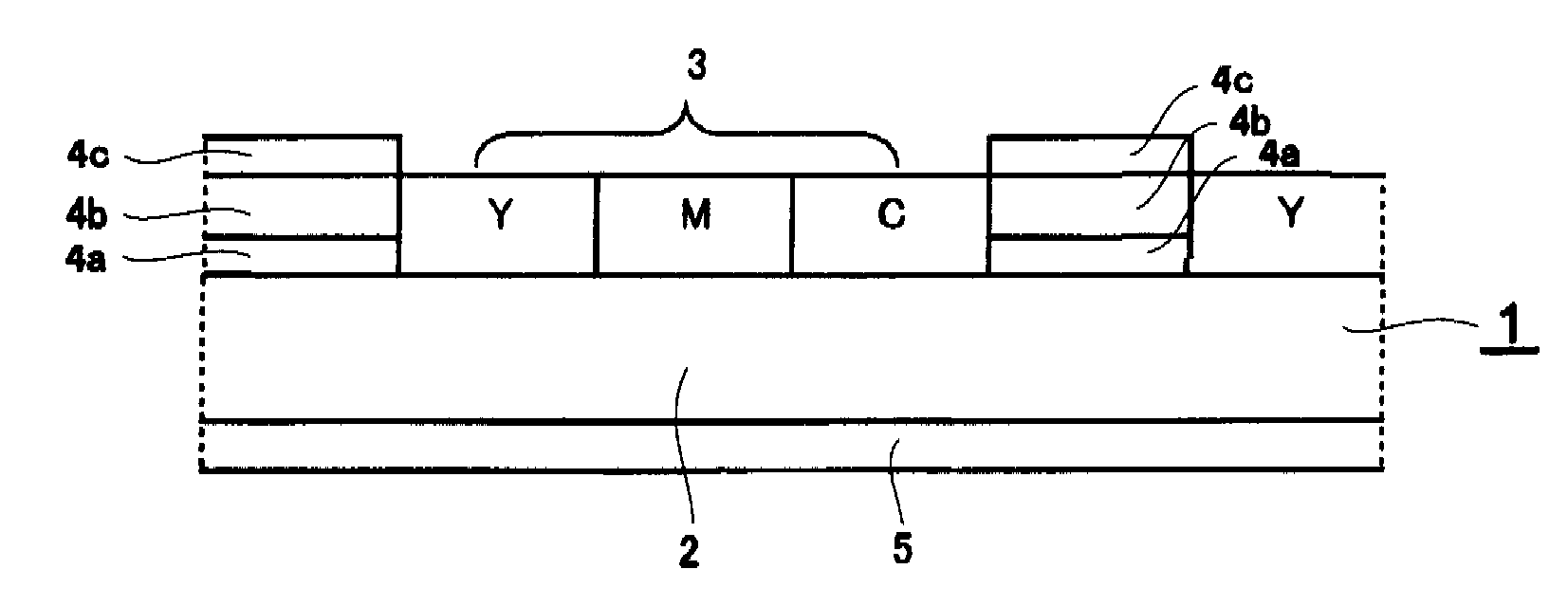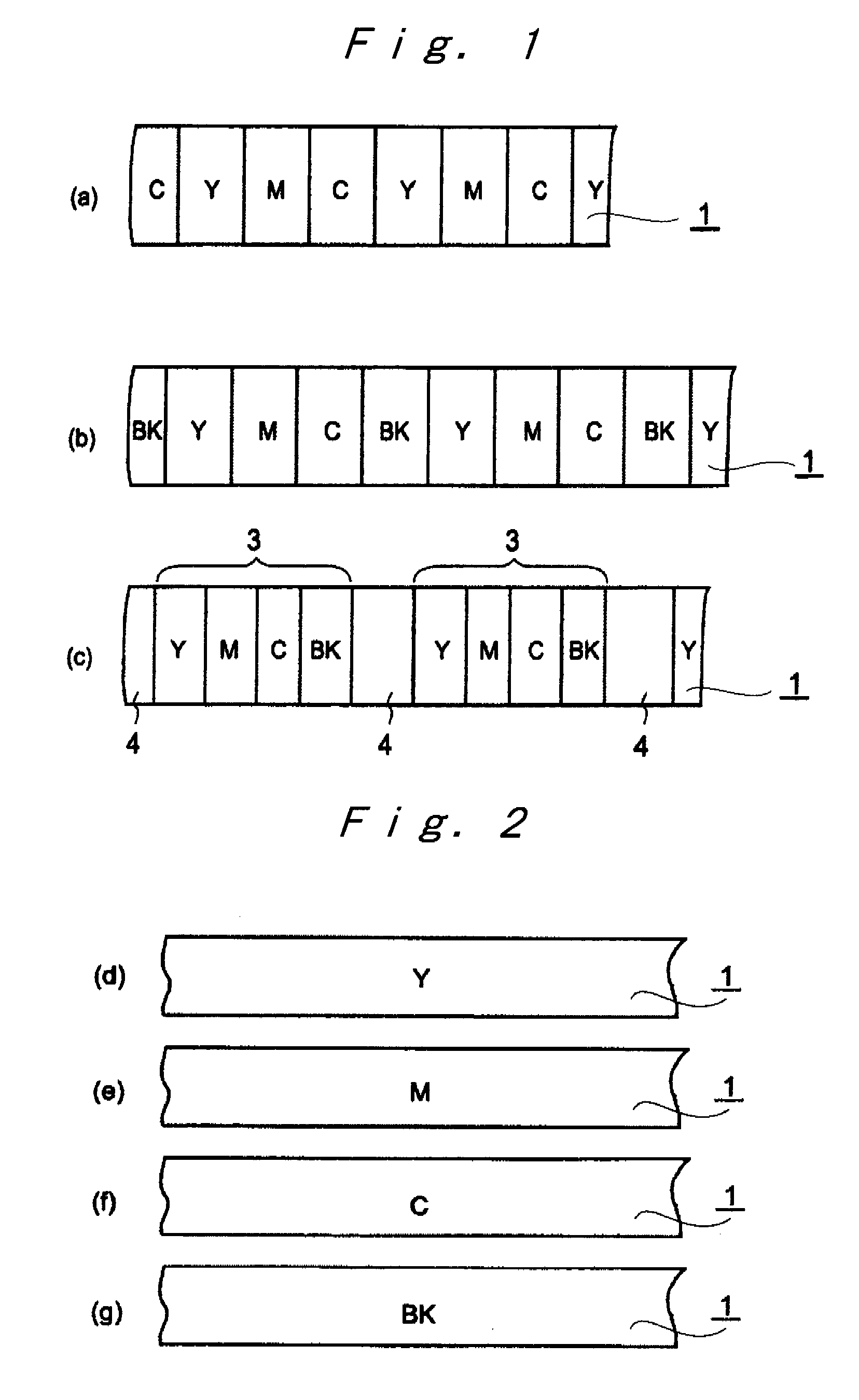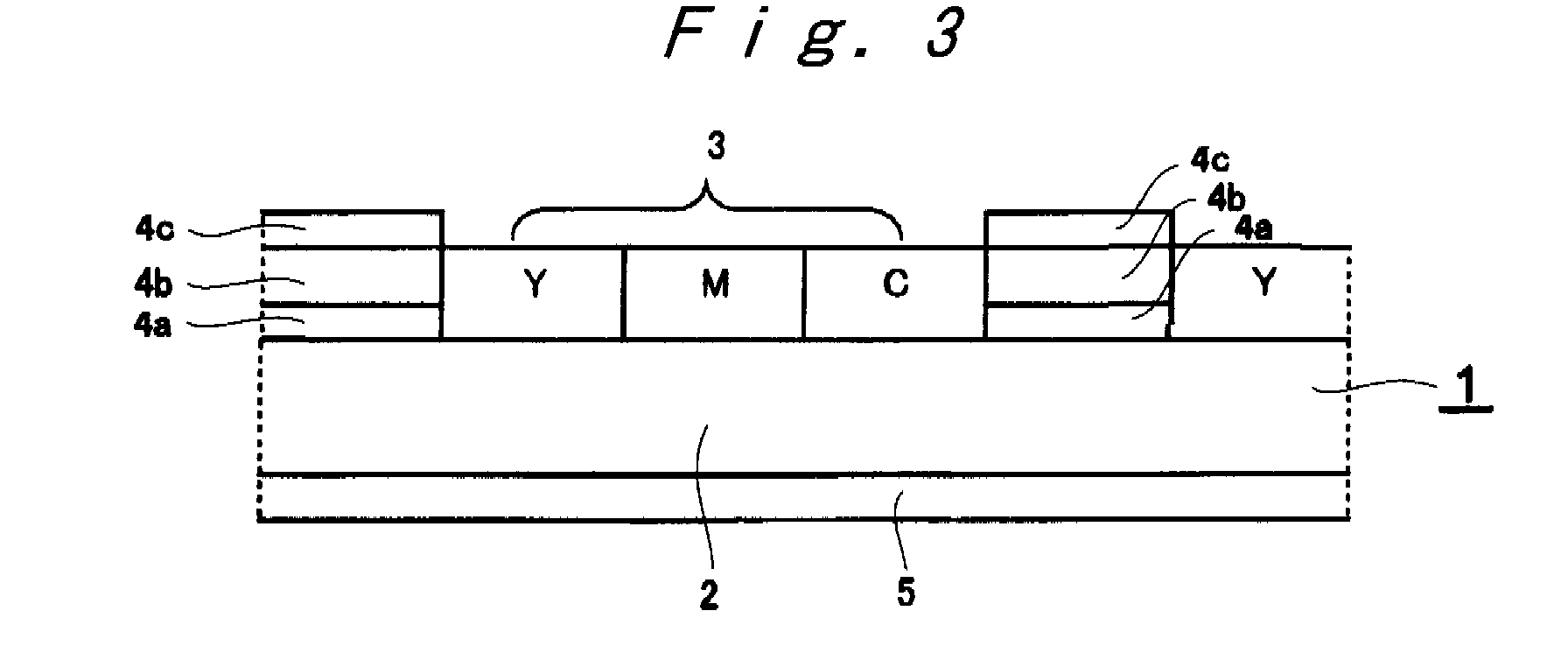Image-forming method using heat-sensitive transfer system
a transfer system and heat-sensitive technology, applied in the direction of diffusion transfer process, instruments, thermography, etc., can solve the problems of affecting the profitability of the image, the rate of image defect occurrence in the time of the obtained image, and the failure of the transfer system
- Summary
- Abstract
- Description
- Claims
- Application Information
AI Technical Summary
Benefits of technology
Problems solved by technology
Method used
Image
Examples
examples
[0300]In the following examples, the terms “part(s)” and “%” are values by mass, unless otherwise specified.
[Preparation of Heat-Sensitive Transfer Sheets]
(Preparation of a Coating Liquid for Heat-Sensitive Transfer Sheet and a Coating Liquid for Protective Layer)
[0301]For preparation of heat-sensitive transfer sheets, the following coating liquids were prepared.
Preparation of a coating liquid for yellow heat transfer layer PY-1Yellow dye compound (Y1-6)3.9parts by massYellow dye compound (Y3-7)3.9parts by massPolyvinylacetoacetal resin (trade name: ESLEC KS-1,6.1parts by massmanufactured by Sekisui Chemical Co., Ltd.)Polyvinylbutyral resin (trade name: DENKA BUTYRAL #6000-C,2.1parts by massmanufactured by DENKI KAGAKU KOGYOU K. K.)Releasing agent0.05part by mass(trade name: X-22-3000T, manufactured by Shin-Etsu Chemical Co., Ltd.)Releasing agent (trade name: TSF 4701, manufactured by0.03parts by massMOMENTIVE Performance Materials Japan LLC.)Matting agent (trade name: Flo-thene UF,...
example 2
[0314]The same tests as Example 1 were conducted using the following image-receiving sheets S2 and S3, respectively, in place of the image-receiving sheet S1 that was prepared in Example 1. As a result, it is understood that the samples which used the heat-sensitive transfer image-receiving sheet and the heat-sensitive transfer sheet according to the present invention showed excellent results. Among the samples using the image-receiving sheet S2, it is also understood that the samples which used the image-receiving sheet S2 together with the heat-sensitive transfer sheet according to the present invention showed excellent results.
(Preparation of Heat-Sensitive Transfer Image-Receiving Sheets)
Preparation of an Image-Receiving Sheet S2 (Image-Receiving Sheet for Comparison)
[0315]A synthetic paper (trade name: Yupo FPG 200, manufactured by Yupo Corporation, thickness: 200 μm) was used as the support; and, on one surface of the support, a white intermediate layer and a receptor layer, h...
PUM
| Property | Measurement | Unit |
|---|---|---|
| Temperature | aaaaa | aaaaa |
| Temperature | aaaaa | aaaaa |
| Glass transition temperature | aaaaa | aaaaa |
Abstract
Description
Claims
Application Information
 Login to View More
Login to View More - R&D
- Intellectual Property
- Life Sciences
- Materials
- Tech Scout
- Unparalleled Data Quality
- Higher Quality Content
- 60% Fewer Hallucinations
Browse by: Latest US Patents, China's latest patents, Technical Efficacy Thesaurus, Application Domain, Technology Topic, Popular Technical Reports.
© 2025 PatSnap. All rights reserved.Legal|Privacy policy|Modern Slavery Act Transparency Statement|Sitemap|About US| Contact US: help@patsnap.com



